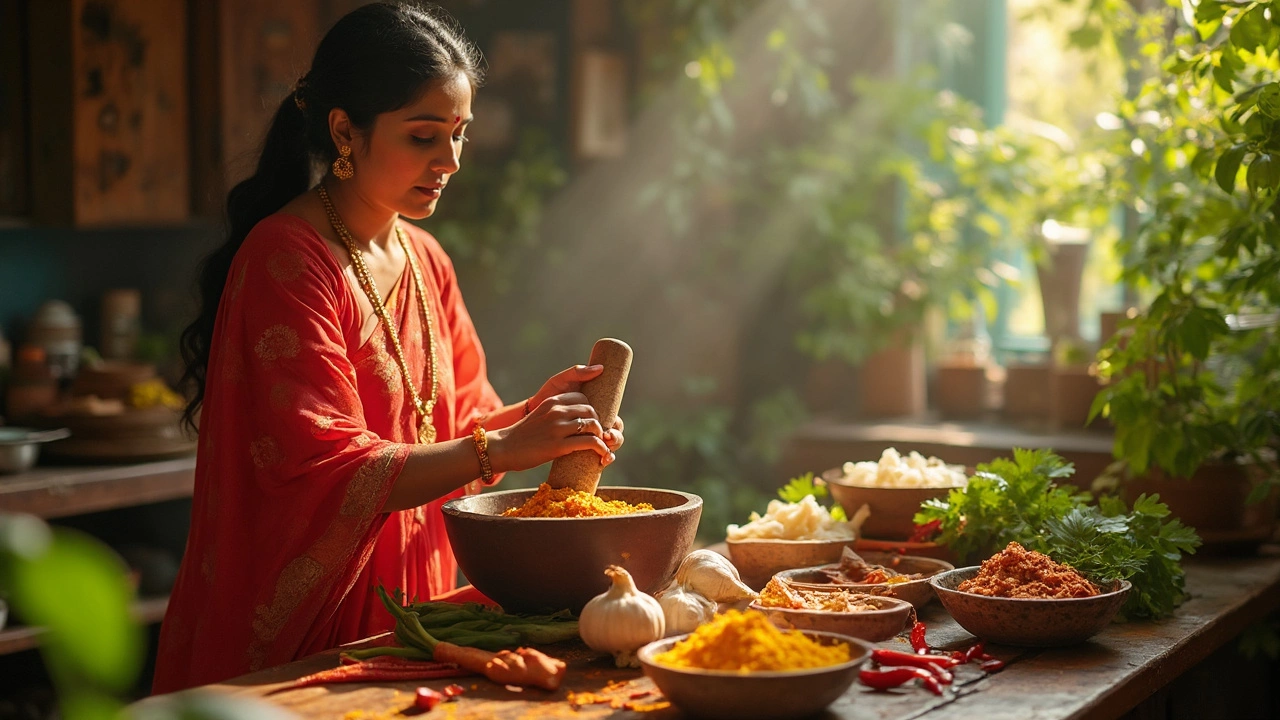Herbs – The Secret Flavor Boosters of Indian Cooking
When cooking with herbs, fresh or dried plant leaves that add aroma and health benefits to Indian dishes. Also known as culinary herbs, they work hand‑in‑hand with spices, dried seed‑based flavor powerhouses and enrich the curry, a sauce‑based staple in Indian meals. Many regional recipes also call for curd, fermented milk that balances heat, creating a balanced flavor profile.
Key Herb Categories and How They Interact
India’s culinary landscape groups herbs into three practical families: fresh leaves like cilantro and mint, dried buds such as fenugreek and kasoori methi, and occasional roots like ginger. Fresh leaves shine in chutneys, salads, and light herbs-based garnishes, delivering bright, short‑lived aromas that vanish once cooked. Dried buds survive the long simmer of biryani or dal, releasing earthy notes that mingle with spices like cumin and coriander, turning a simple broth into a layered masterpiece. When you add curd or yogurt to a hot curry, the tangy acidity lifts the herbaceous scent, while the fat in the dish carries the volatile oils further into the palate. This triple interaction – herb + spice + curd – is why many classic Indian sauces feel both robust and soothing.
Practical tips make this chemistry work every time. Harvest cilantro just before you cook; the stems hold as much flavor as the leaves. Toast dried fenugreek leaves lightly to unlock their bittersweet edge before crushing them into a spice mix. Store fresh herbs in a damp paper towel inside the fridge to keep them crisp for up to a week. If you’re short on fresh mint, a spoonful of dried mint powder can mimic the cool finish in a raita, especially when mixed with curd. Remember that heat kills delicate herb oils quickly, so add fresh herbs at the end of cooking or as a bright garnish. By mastering these simple moves, you’ll see how herbs turn ordinary dishes into memorable meals.
Now that you’ve got the basics, the posts below dive deeper into specific herb uses—from the science behind mint in chutney to the role of kasoori methi in creamy curries. Explore practical recipes, nutrition facts, and troubleshooting tricks that will let you wield herbs like a seasoned chef.

Is Chutney Anti-Inflammatory? The Surprising Truth Behind This Popular Condiment
Chutney often gets tossed on the plate as just an extra, but this zingy condiment can be packed with ingredients that fight inflammation. This article breaks down what goes into typical chutney recipes and why those herbs, spices, and fruits matter for your health. We’ll dig into what research says about classic chutney ingredients like ginger, turmeric, and garlic. Plus, there are easy tips on making your own anti-inflammatory chutney at home. Find out which combinations bring the most benefits when you whip up your next batch.